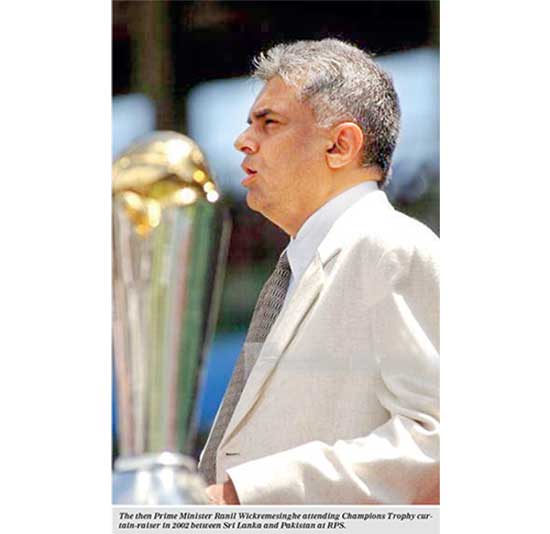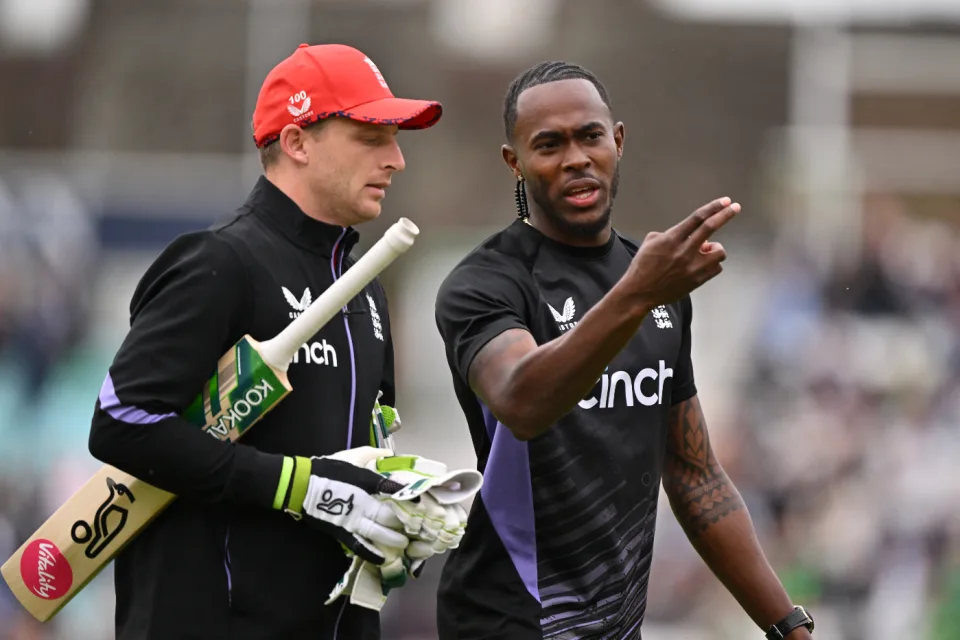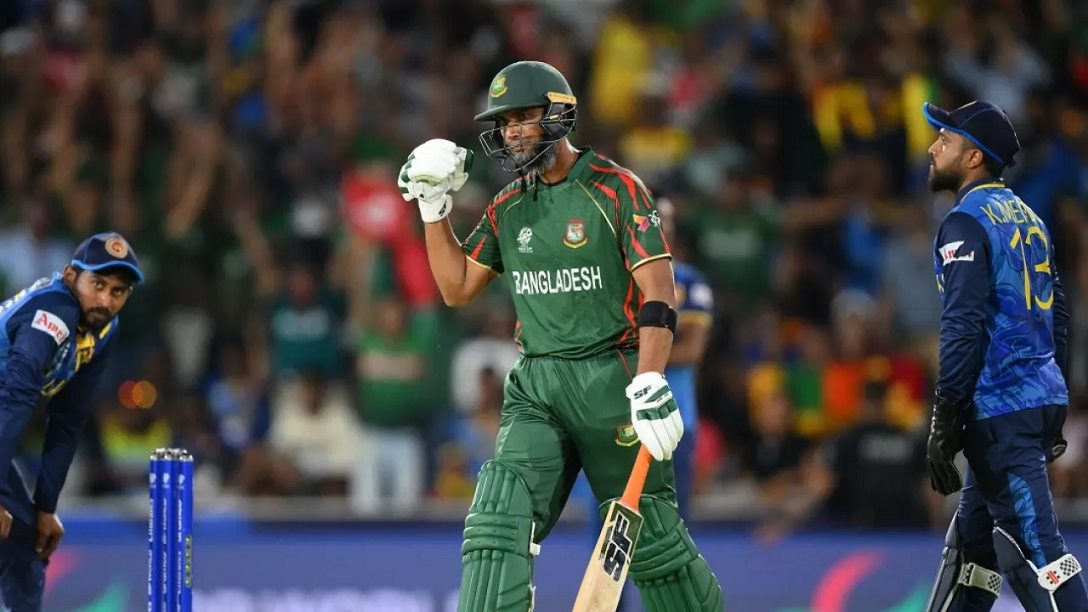Sports
What Ranil can learn from cricket

by Rex Clementine
If your grandchildren ask how bad 2020 was tell them that even Ranil Wickremesinghe couldn’t survive as the leader of UNP!
Ranil’s tenure as UNP’s leader has been noteworthy. He assumed duties as the party leader in 1994. The Sri Lankan cricket captain at that point was Arjuna Ranatunga. Since then, Sri Lanka has had 11 different Test captains; England has won a World Cup; International Cricket Council’s founder members have lost their veto powers and India has taken over as world’s leaders of cricket. Even the Catholic Church has seen three different Popes during the last 25 year – John Paul II, Benedict XVI and Francis I. But Ranil remains UNP’s leader!
Sir Ian Botham is the greatest cricketer produced by England in the last 50 years. So is Ranil. Not many are fit to hold a candle to Ranil when it comes to his oratory skills or his knowledge of the Constitution. But everyone is not a leader. Botham had a brief stint as England captain. When the Ashes was slipping away from England under his charge in 1981, he sensed what was in store for him and stepped down before being axed. Mike Brearley, Botham’s successor was hardly a match winner; he never scored a Test match hundred and ended up with an average of 22. But Brearley, who had degrees from Cambridge for Classics and Moral Science, was an outstanding leader. As Rodney Hogg, the Australian fast bowler put it, “Brearley had a degree in people.”
 Ranil failed to see the signs. The writing was on the wall for him in the lead-up to the recent election. Instead of handing over the party reins to someone else he decided to stay put and the voters taught him an unforgettable lesson. Ranil did not have Botham’s humility to play under someone who could never match his abilities or skills.
Ranil failed to see the signs. The writing was on the wall for him in the lead-up to the recent election. Instead of handing over the party reins to someone else he decided to stay put and the voters taught him an unforgettable lesson. Ranil did not have Botham’s humility to play under someone who could never match his abilities or skills.
Having stepped down from captaincy, Botham extended his fullest support to the new skipper. His impact in the 1981 series was such that it was called ‘Botham’s Ashes.’
Not Ranil, though; he dragged his feet on naming Sajith as UNP’s presidential candidate, and after naming him came up with some ill-timed moves that literally derailed his understudy’s campaign.
Ian Chappell is one of the finest captains the game has ever seen. He didn’t hesitate to take on the administration, demanding that his players be paid well and that he be part of the process where decisions were made. Chappell was so straight forward that he didn’t even spare Sir Don Bradman. Chappell was a true leader.
Ranil unfortunately while being in power didn’t fight for his rights or for those of his party members. He has absolved himself of any responsibility for the Easter Sunday attacks, claiming that he had not been invited to Security Council Meetings. Ranil shouldn’t have taken it lying down when he was kept out of those important meetings. Then after the attack, his lack of remorse during television interviews gave the impression of a man who did not feel for his people.
Chappell’s grandfather Vic Richardson also captained Australia. The best advice he gave young Chappell was ‘if you ever get a chance to captain Australia, don’t captain like a Victorian.’
Ranil too had close relatives at the helm of politics. They should have told him what ‘disce aut discede’ really meant.
Chappell even dropped his best mate Doug Walters from The Oval Test of 1972. It was the first time ever a New South Walesman did not feature in an Australian Test side. Dick Tucker, a reputed Australian journalist told Chappell that he was surprised at what the latter had done.
Chappell said something interesting: ‘Dick, If you think that I am going to pick Doug Walters because he is a mate of mine when that is not in the best interest of the team, you don’t know me. I am going to pick a team that is going to win a game. I am not going to pick up all my mates and leave out someone who I am not fond of. Ridiculous.”
Ranil has a lot to learn from Chappell. One of the first things he did after being in the opposition for more than a decade was to appoint his mate Arjun Mahendran as Governor of Central Bank. The rest, as they, say is history. After all, here’s a man who said, when President Mahinda Rajapaksa appointed Ajith Nivard Cabraal as the Governor of Central Bank, that it was like ‘picking a donkey for a Derby.’
Not just Botham and Brearley, Ranil has a lot to learn from even our own T.M. Dilshan. Not the brightest captain that we have had, Dilshan became the first Sri Lankan skipper to win a Test match in South Africa. But he lost the series. The following day he announced that he was stepping down from captaincy.
Ranil should have stepped down the day after his party was reduced to just one seat in Parliament. He is still hanging on, hoping against hope.
Sports
England face Australia in the battle of champions

The first truly heavyweight clash of this expanded T20 World Cup format comes freighted with both history and subplots. A rematch of the 2010 World T20 final at Kensington Oval, the match pits Jos Buttler’s defending champions – who are aiming to become the first team to retain the trophy – against the Australian winning machine, victors at the 2021 edition and current world title-holders in Test and ODI cricket. And that’s before you throw in the Ashes for afters.
Already there is added pressure on England, after the rain in Bridgetown led to a share of the points in their opener against Scotland (and that having conceded 90 runs from 10 overs without taking a wicket in a tepid bowling display). Lose to their oldest rivals and it will leave their Super 8 prospects open to being waylaid by the perils of net run-rate calculations, or worse.
The Scotland match was the third abandonment in five suffered by England, after a rain-affected home series against Pakistan, which has clearly hampered their readiness for this campaign after almost six months without playing T20 together. It does not take much for a side to click in this format – and England looked in decent shape when they did get on the field against Pakistan – but Buttler will be anxious for things to go their way on Saturday, if only to avoid further questions referencing the team’s disastrous ODI World Cup defence last year.
Australia, under the laidback leadership of Mitchell Marsh would love nothing more than to add to the English sense of jeopardy – having helped bundle them out of the tournament in India on the way to taking the crown. Their head to head record is less impressive in T20 however, with England having won six of the last seven completed encounters, as well as that 2010 final.
Despite a wobble with the bat, Australia avoided mishap against Oman earlier in the week, the experience of David Warner and Marcus Stoinis shining through in difficult batting conditions. Surfaces in the Caribbean – not to mention those games staged in the USA – have already had teams scratching their heads; rather than the “slug-fest” England had prepared for, following a high-scoring tour of the Caribbean in December, it looks as if boxing smart may be the way to go.
Speaking of Warner, this could be the last time he faces up against England in national colours – and another match-winning contribution would likely reduce the chances of them meeting again in the knockouts. On the other side of the card is Jofra Archer, fresh from an emotional maiden outing at Kensington Oval and ready to take on Australia for the first time in any format since 2020. Can Mark Wood fire up England’s campaign, as he did during last summer’s Ashes? Will Pat Cummins be back to harass the old enemy once again? Seconds out, it’s almost time to rumble.
Cummins is set to return after being rested for the Oman game, which saw Mitchell Starc leave the field with cramp. Starc is understood to be fine and could keep his place – which would likely see Nathan Ellis miss out. Marsh is still not fit to bowl, with Australia likely to continue with the allrounder combination of Stoinis and Maxwell to give them cover.
Australia (probable XI): David Warner, Travis Head, Mitchell Marsh (capt), Glenn Maxwell, Marcus Stoinis, Josh Inglis (wk), Tim David, Pat Cummins, Nathan Ellis/Mitchell Starc, Adam Zampa, Josh Hazlewood
The one change England may consider is Reece Topley coming in for Wood, with the expectation that there will be some rotation among the seamers through the course of the tournament.
England (probable XI): Phil Salt, Jos Buttler (capt & wk), Will Jacks, Jonny Bairstow, Harry Brook, Liam Livingstone, Moeen Ali, Chris Jordan, Jofra Archer, Adil Rashid, Reece Topley/Mark Wood
[Cricinfo]
Sports
South Africa up against their bogey team in batter-unfriendly New York

Once is coincidence, twice is a clue, and three times is proof.
To paraphrase Agatha Christie, that is the narrative around South Africa’s meeting with Netherlands at this T20 World Cup.
The Dutch beat South Africa at the 2022 tournament and ended their semi-final hopes in a match where South Africa appeared to be sleep walking, and then beat them again at the 2023 ODI World Cup, where they exposed South Africa’s vulnerability in the chase. If they to do the treble, not only will Netherlands take the lead in Group D, but they will offer conclusive evidence of the threat they pose to Full Members, especially South Africa.
Of course, it will take some doing after South Africa’s opening performance against Sri Lanka, where they reduced their opposition to their lowest T20I total and chased it down in fairly straightforward fashion thanks to the most stable middle-order of their white-ball era. In Aiden Markram, Tristan Stubbs, Heinrich Klaasen and David Miller, South Africa have bankers and big-hitters and, for this match, they also have the advantage of experience. They’ve already played at Eisenhower Park, and have first-hand knowledge that run-scoring doesn’t come easily;Klassen said they are prepared to use their “cricket brains” and play “smarter cricket”.
But the conditions could be good news for Netherlands, who are not naturally a line-up of big hitters and build their innings on a foundation of turning ones into twos. In other words, they tend to take a slightly more conservative approach to batting, which may work well here, but they’ll be wary of the uneven bounce of the surface and will have to come up with plans to counterattack especially against South Africa’s seamers. Their own bowlers were exemplary in Dallas and will look to build on that performance against a line-up that will likely be more proactive than Nepal’s, but who they have managed to keep quiet not once, but twice in the past. Third time’s the charm, they say.
Anrich Nortje’s stunning return to form against Sri Lanka means South Africa may not have to tinker with the bowling combination, and Gerald Coetzee and Tabraiz Shamsi may have to wait their turns to get a game. The batting line-up should be unchanged, with no space for Ryan Rickelton yet.
South Africa: Quinton de Kock (wk), Reeza Hendricks, Aiden Markam, Tristan Stubbs, Heinrich Klaasen (wk), David Miller, Marco Jansen, Keshav Maharaj, Kagiso Rabada, Ottneil Baartman, Anrich Nortje
Conditions in New York may tempt Netherlands to include an extra seamer and they have Kyle Klein in their squad. But it could come at the expense of a shortened batting line-up and they may not want to risk that.
Netherlands: Michael Levitt, Max O’Dowd, Vikramjit Singh, Sybrand Engelbrecht, Scott Edwards (capt, wk), Bas de Leede, Teja Nidamanuru, Logan van Beek, Tim Pringle, Paul van Meekeren, Vivian Kingma
[Cricinfo]
Latest News
Mustafizur, Rishad, Hridoy dazzle in Bangladesh’s tight two-wicket win over Sri Lanka

Nuwan Thushara’s last over brought Sri Lanka screaming back into the match,as he first bowled Rishad Hossain, and then nailed Taskin Ahmed in front of the stumps with a pinpoint swinging yorker. This left Bangladesh eight wickets down, with 12 runs still to get.
However, the experienced Mahmudullah was at the crease for Bangladesh, and despite some further nervy moments, pushed Bangladesh across the line off the last ball of the 19th over.
But this was a match chiefly decided by Bangladesh’s own outstanding bowling. Mustafizur Rahman was the best among them, using shorter lengths and his cutters efficiently, to claim figures of 3 for 17. Rishad Hossain’s three-for through the middle overs also kept Sri Lanka quiet.
Mustafizur was instrumental in Sri Lanka’s downward spiral through the middle overs, which culminated in a crash-and-burn end. Ultimately, their inability to find boundaries, or even rotate strike against good Bangladesh bowling resulted in their downfall. A score of 125 for 9 always seemed poor on a decent pitch, even if their bowlers made a match of it in the end.
Brief scores:
Bangladesh 125 for 8 in 19 overs (Towhid Hridoy 40, Litton Das 36; Dhanajaya de Silva 1-11, Nuwan Thushara 4-18, Wanidu Hasaranga 2-32, Matheesha Pathirana 1-27) beat Sri Lanka124 for 9 in 20 overs (Pathum Nissanka 47, Dhananjaya de Silva 21; Tanzim Hasan Sakib 1-24, Taskin Ahmed 2-25, Mustafizur Rahman 3-17, Rishad Hossain 3-22) by two wickets
[Cricinfo]





















